Royal Staffordshire Iris by Arthur J Wilkinson 1907 | ||
 | ||
This dynamic, art nouveau, transfer pattern comes in the following 6 colors with gold accents: Blue or Flow Blue, Teal or BlueGreen, Blue Multicolor or Polychrome (hand painted orangish irises, light green, bronwish & graygreen accents), Teal Multicolor (with hand painted yellow irises and reddish orange & greenish details), Green Multicolor (rich green with hand painted red irises, light green, browngreen & dark accents), Brown Multicolor (redbrown with hand painted yellow irises and green,cream, salmon details & dark accents). There are also Blue and Teal pieces with no gold accents, just gold rims. Back stamps tend to date the pattern to 1907. Alfred Colley issued an identical pattern called Lusitania that was produced from 1910- 1914 in the dark blue with gold combination. The sharpness of detail in the transfer is a bit more crude, but still lovely. Arthur and son Colley Shorter owned the Wilkinson factory in nearby Burslem so I suspect that the pattern Alfred Colley used for Lusitania came from the same source. I don't know the realtionship, if any, suggested by the names, proximity and pattern duplication. It may be that when AJ Wilkinson stopped producing the pattern around 1910 they sold it to Colley. I've seen that happen with various silver patterns of the same era: Carpathia, Holly, Calla Lily, etc. I'd love to see your special pieces. Contact Tyler_alpern@yahoo.com | ||
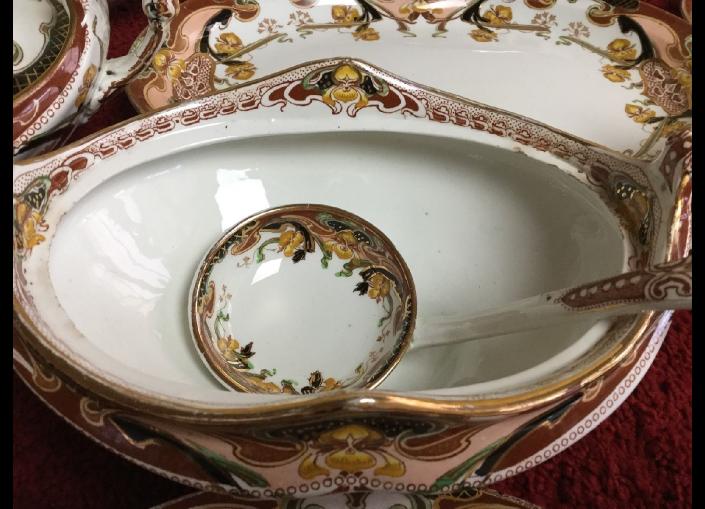 | ||
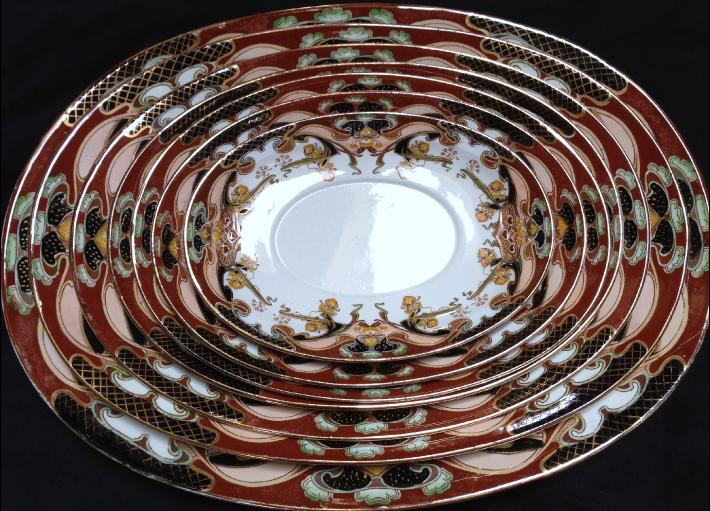 | ||
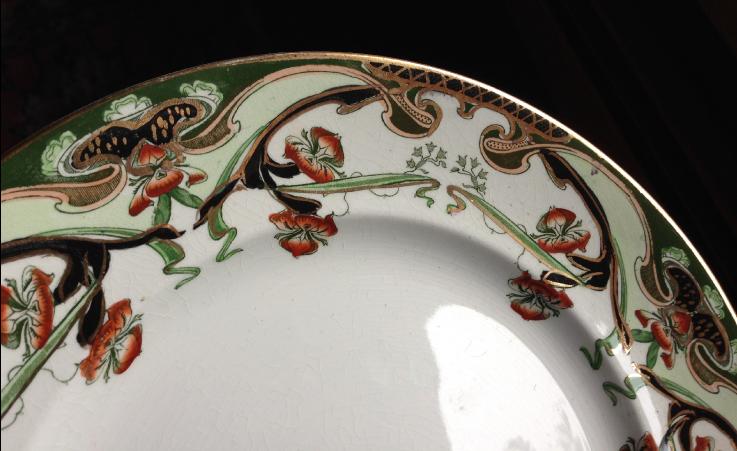 | ||
The red, dark green/black and some gold is hand painted over the green transfer. Greens are both warm and cool, dark and light, vibrant and dull making a very complex and satisfying color scheme. Dinner plates are 10.25 inches with some slightly larger. Luncheon plates are 9 inches, then there are 8 inch, 7 inch, and 6 1/8 inch plates too. Oval platters come in 7 sizes as pictured above from my Brown Polychrome collection. The Brown is less red than it appears in these pictures, more of a neutral color and a true brown. Directly below is the lovely and most common Blue pattern with gold accents. It can be very crisp, to very runny and anywhere in between. Dark blues range from warm ultramarine on some toward a cool thalo on others. Very striking, rich color in person. It is my most favorite, though easy to find so I don't showcase it here. | ||
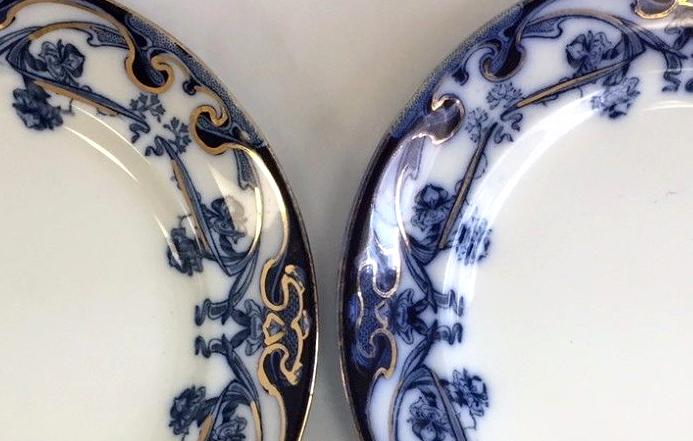 | ||
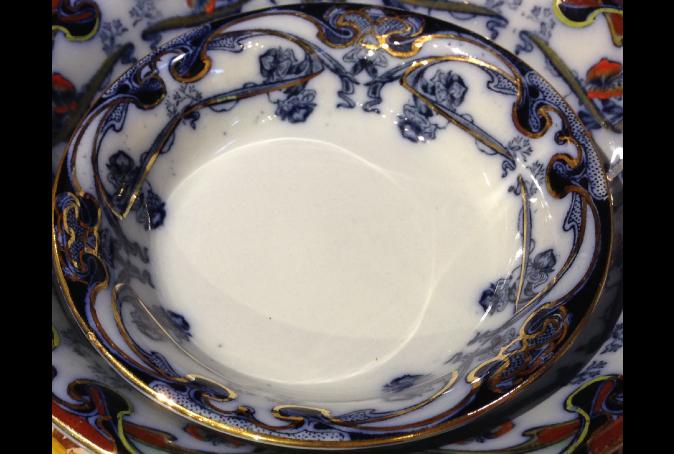 | ||
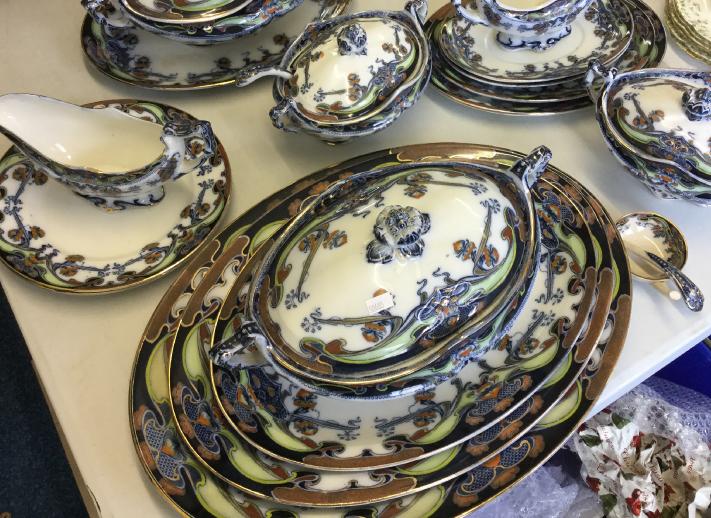 | ||
The above photo really captures the nuance of color in the Blue Polychrome. You can see the difference in shade between the brownish accents and the redorange flowers. Still hard to see the different greens. It is very difficult to accurately photograph color quality of these peices. They really are better in person. Too bad about the fragile ladle on the right in the above image. I hope it was repaired with good care. Again you can see the 7 oval platter sizes speard out here. The smallest oval is an underplate for the coverd sauce dishes or gravy boats. Like this set, my Brown service also has 2 small covered sauce tureens with ladles, 2 gravy boats, an oval and round tureen and the 7 sizes of oval dishes. I speculate that this grouping was a standard service set offering when the pieces were orginally sold. I bet creamers and sugar bowls were sold separately as were other service items like tree and well platters, celery plates, pitchers, pancake plates, cranberry bowls, butter domes, cake platters, etc. The tureens are so fabulous in photos, but on the table I think they look a too precious and old-fashioned like a lace doily. | ||
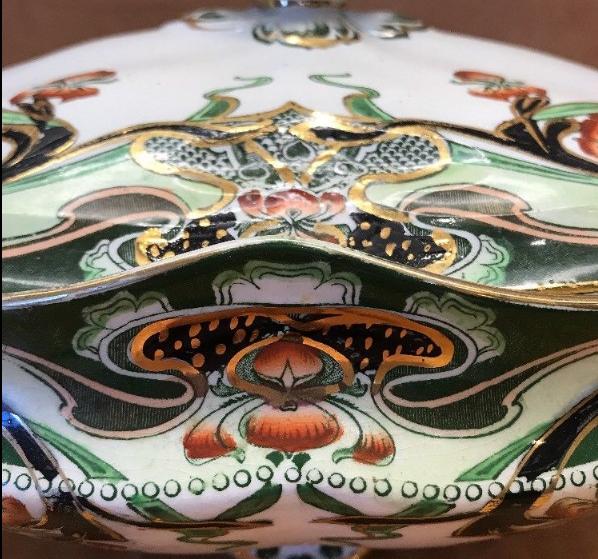 | ||
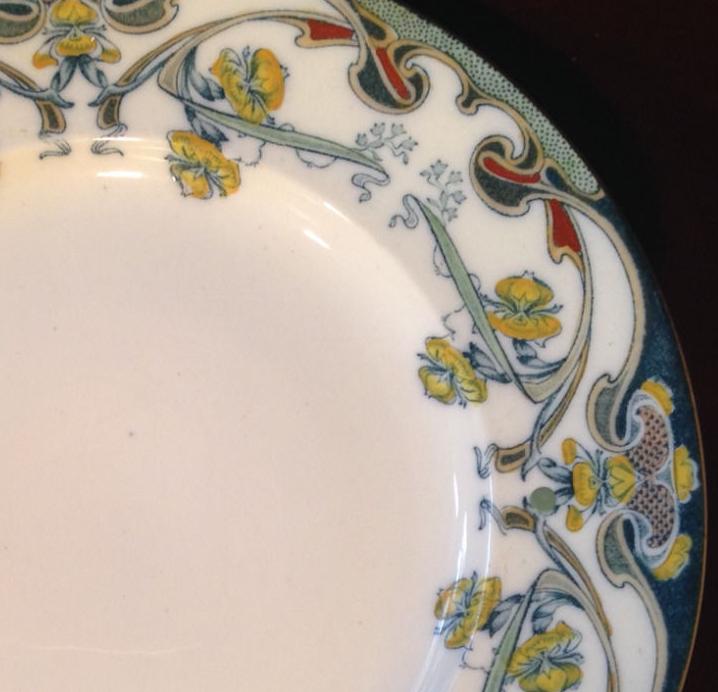 | ||
This color combo used for the Teal Polychrome does not work for me and the hand painted elements often seem too sloppy in this variation. It is the most common of all the polychome patterns. The Brown typically has very precise hand painted elements. | ||
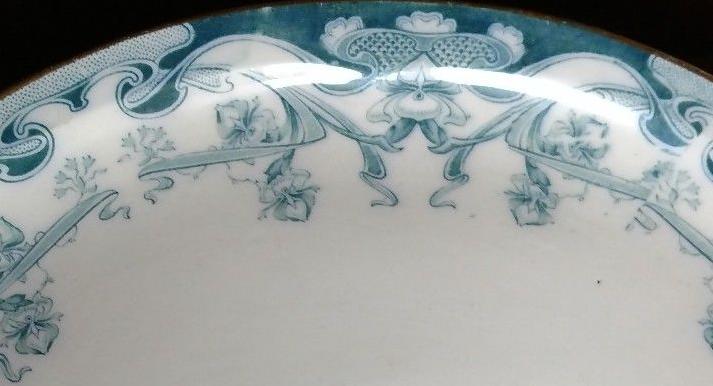 | ||
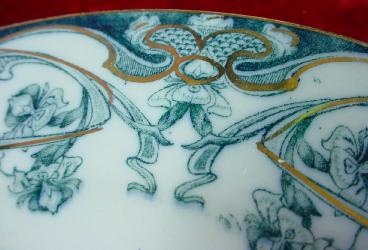 | ||||
Above: Teal or BlueGreen with no gold accents, just gold trim. Blue or Teal pieces without the gold accents really feel like they are missing something. I am surprised what a difference the gold makes. Personally, I find the Teal very disappointing compared to the Blue. Be careful buying online, very often photos make the Teal look as dark as the Blue and you might think you are buying the richer, dark blue color until it arrives and you see it is much more light and pale. Hard to tell in the images below if the pattern is Teal or Blue because the darkest portions look almost black in the photos when in fact they will look much more like the image above or to the right, if not lighter. Only the third photo below depicts the Blue color. | ||||
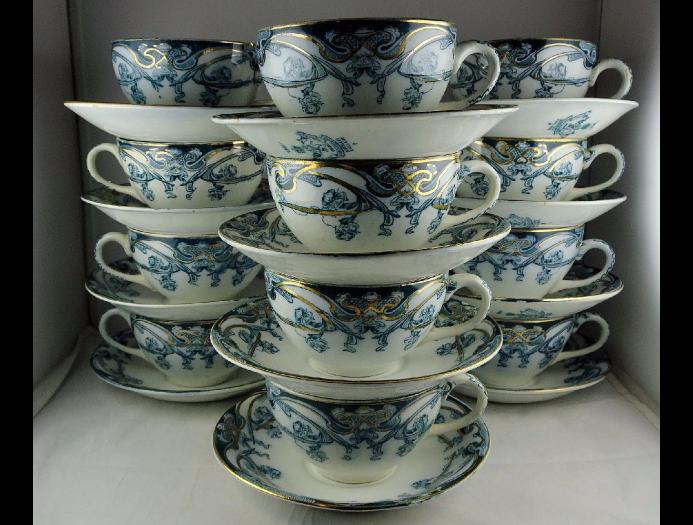 | ||
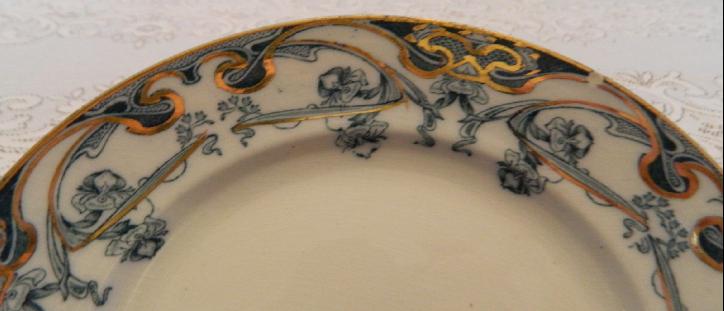 | ||
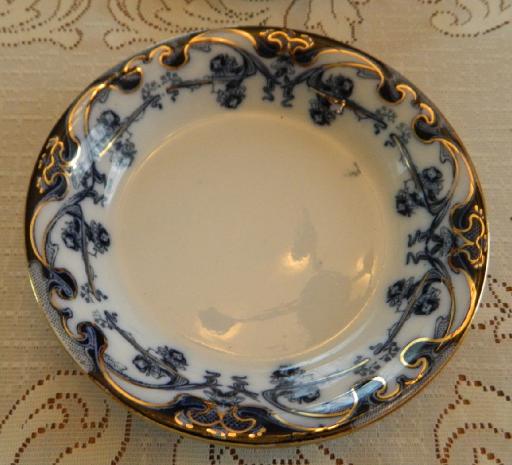 | ||
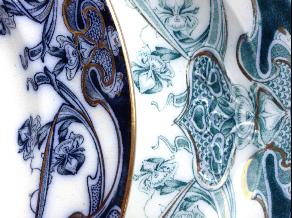 | |||||
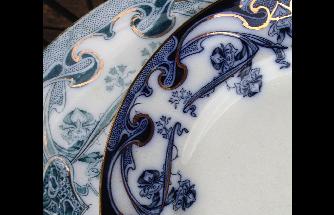 | |||||
Blue VS Teal
Lovely together | |||||
Many pieces found today now have crazing or crackling on the glazed surface and are frequently stained under the crazed glaze. I have had great success cleaning what seemed like ruined pieces with hydrogen peroxide. Experts in restoration testify that it is very safe and does not harm the china. The low 3% formula found at the pharmacy deptartment or grocery store works great. No need for the higher grade formula only availble at some beauty supply stores that others describe online. The peroxide itself works slowly, but pouring it on the plate and setting it in the hot direct sun safely works miracles in a few hours. Stubborn stains may take a few repeat applications or a soaking overnight before placing in the sun. It really appears to work fast just as it is about to dry up. Sometimes I apply a few thin, fast-drying coats to finish a piece if a longer soak and sun didn't completely eliminate the stain. Try it, you can save some really dingy, seemingly ruined pieces. It does not hurt the gold at all. NEVER use chlorine bleach. That will cause the glaze to fall off in the near future. Below are some examples of crazing and staining that will clean up perfectly with just one day in the peroxide and even cool spring sun. The outdoor, direct sunlight makes all the difference. | ||
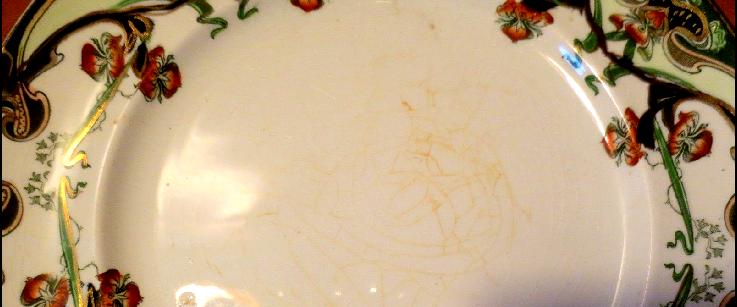 | ||
There are a wide myriad of types of dining and service pieces following the Victorian Era mania for exccessive tableware in the previous century. Visit Replacements.com to get a sense of all the varieties. Search under Wilkinson Iris rather than Royal Staffordshire then click on: "View entire pattern listing." Wildly specfic plates were created for so many different foods: pancakes, celery, hard boiled eggs, tea bags, cake, butter, cranberries - just to name a few. | ||
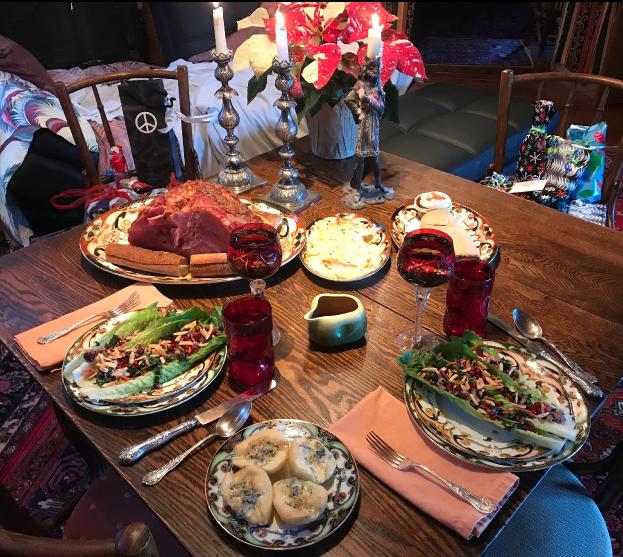 | ||
I like to use the Brown service at Thanksgiving with Charter Oak silver, the Green at Christmas with E H H Smith Holly silver and the Blue for the spring and summer with either Fleur de Luce, Smith Iris or Williams Louvre silver to match irises. Or it is fun to mix them all up at the same setting. Any dessert or appetizer is lovely on the small Blue and gold plates with Towle Canterbury pierced forks. You can even make jello seem special on these. | ||
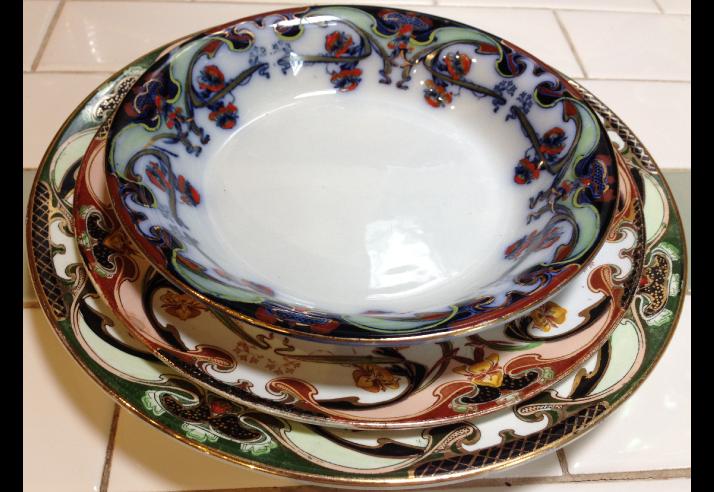 | ||
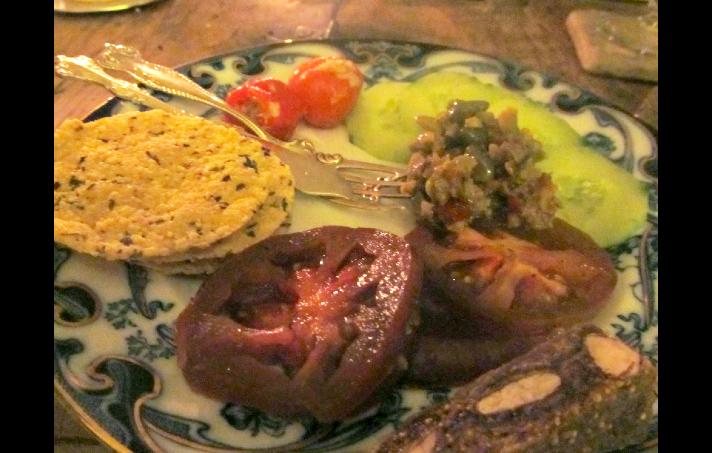 | ||
Silver below: Fluer de Luce, Charter Oak, Holly, Louvre, Canterbury. | ||
 | 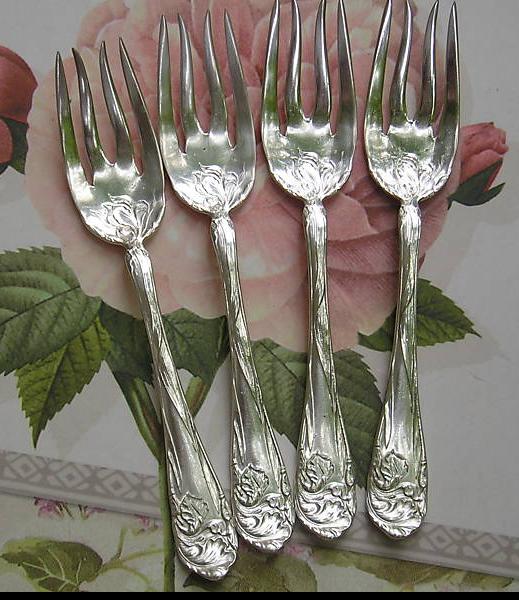 | |||
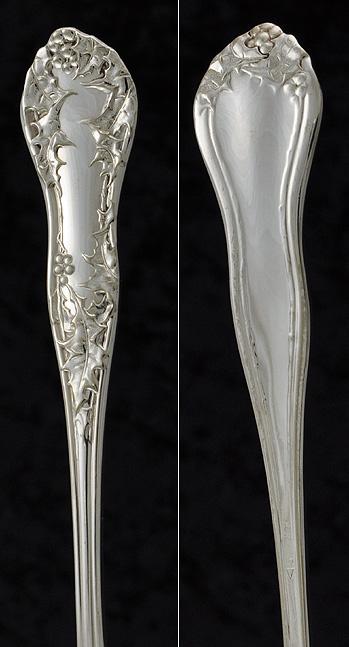 | ||||||
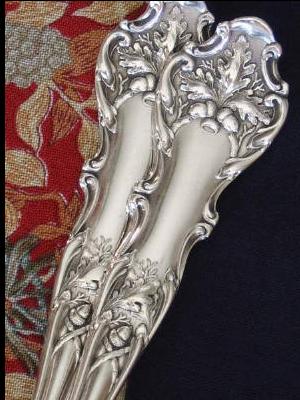 | ||||||
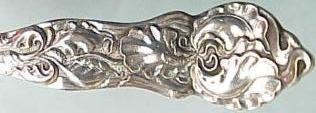 | ||||||
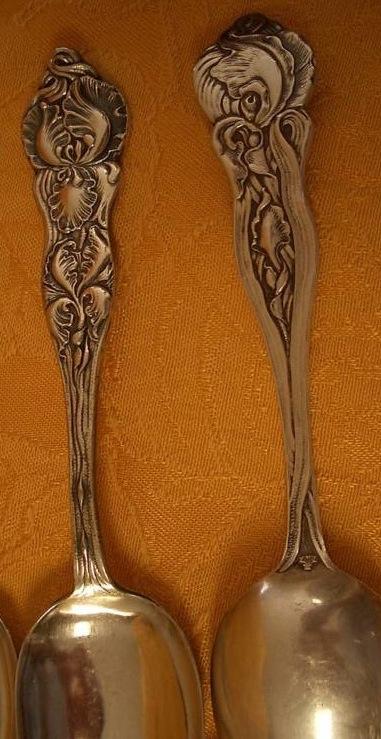 | ||||
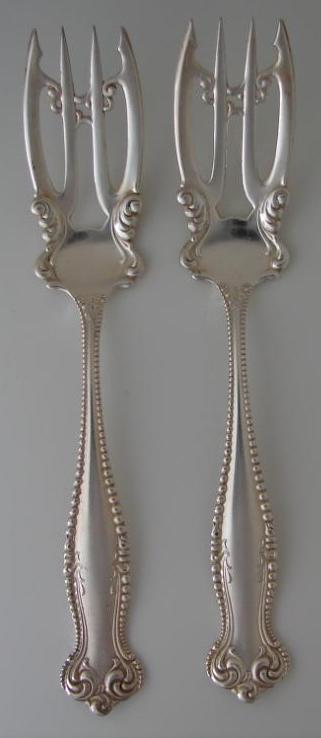 | ||||
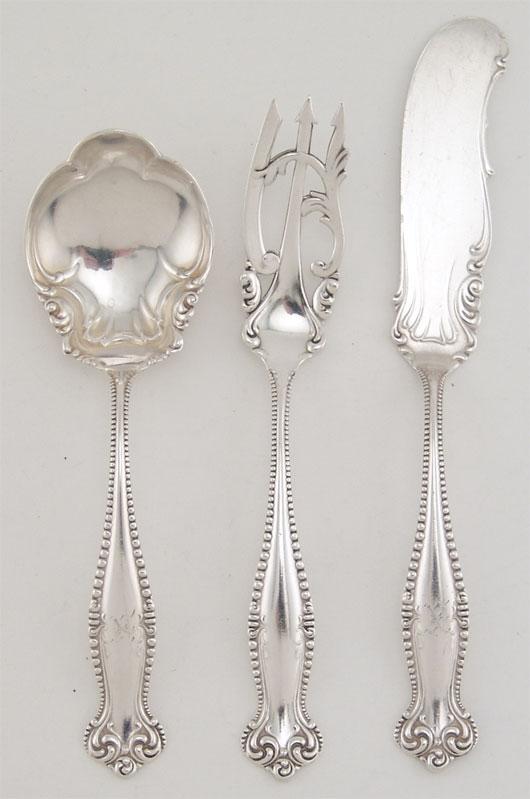 | ||
Visit these sites to learn more about the transfer process: https://www.youtube.com/watch?v=9P7sIvxtLho or http://nancysdailydish.blogspot.com/2010/01/what-is-transferware-and-how-is-it-made.html | ||
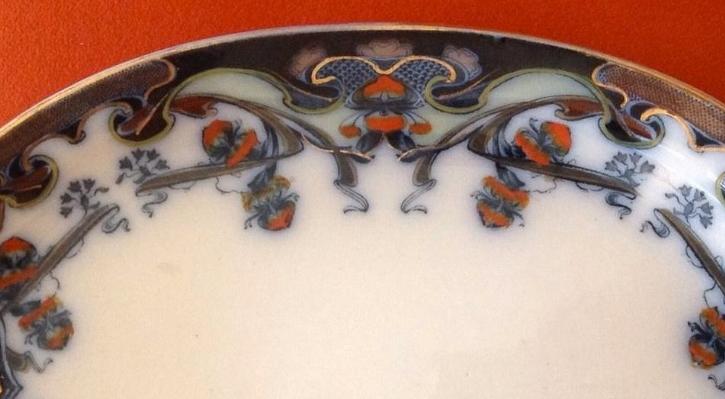 | ||
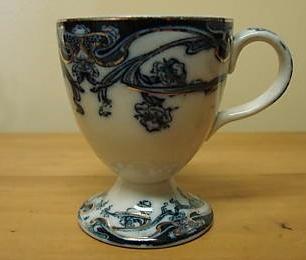 | ||||
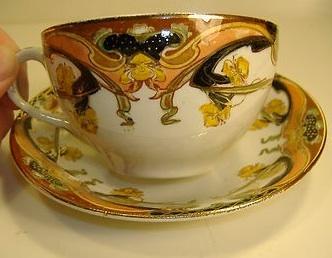 | ||||
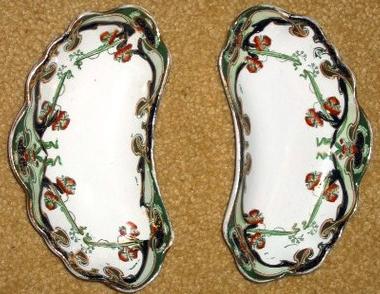 | ||||
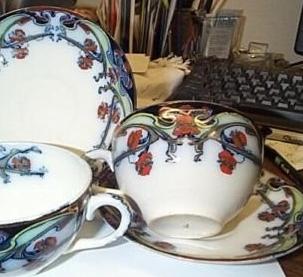 | ||||
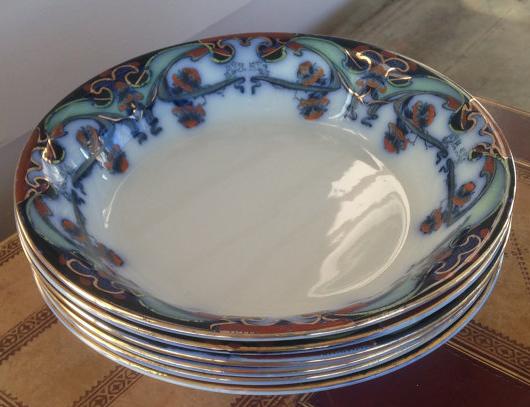 | ||
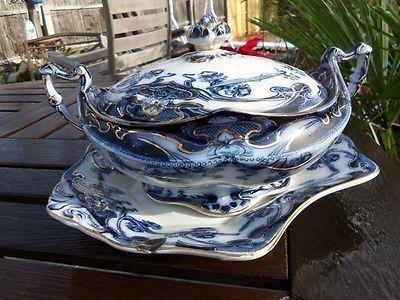 | ||||||
Generous offers for rare peices will be considered. | ||||||
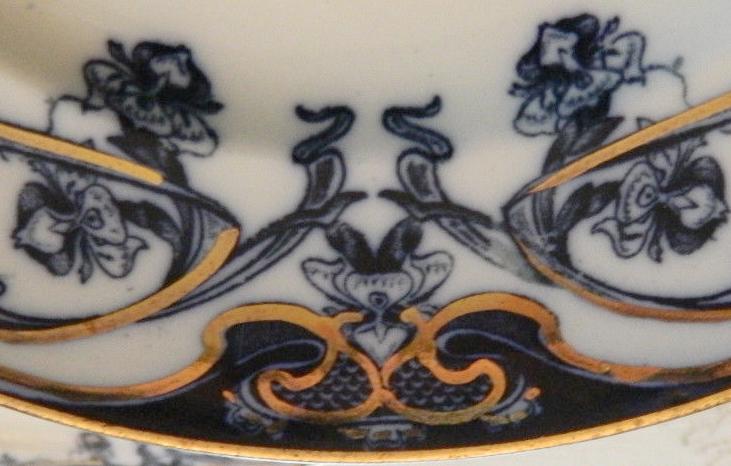 | ||